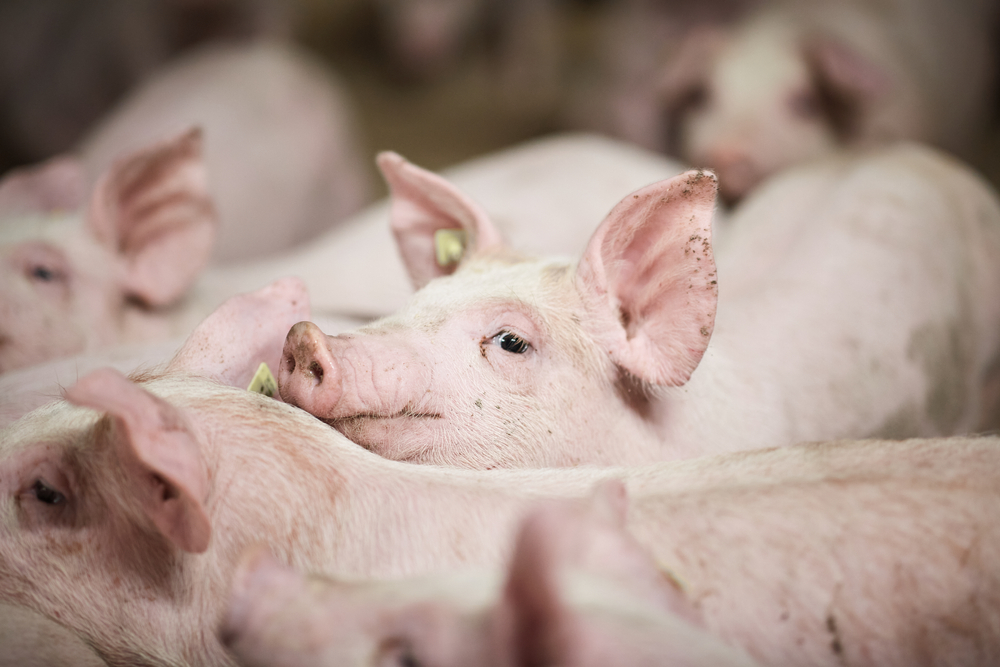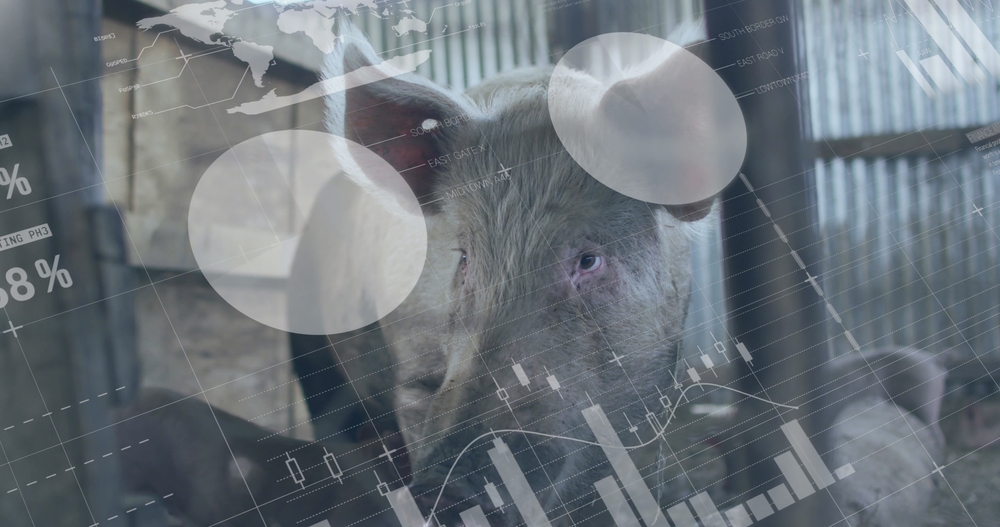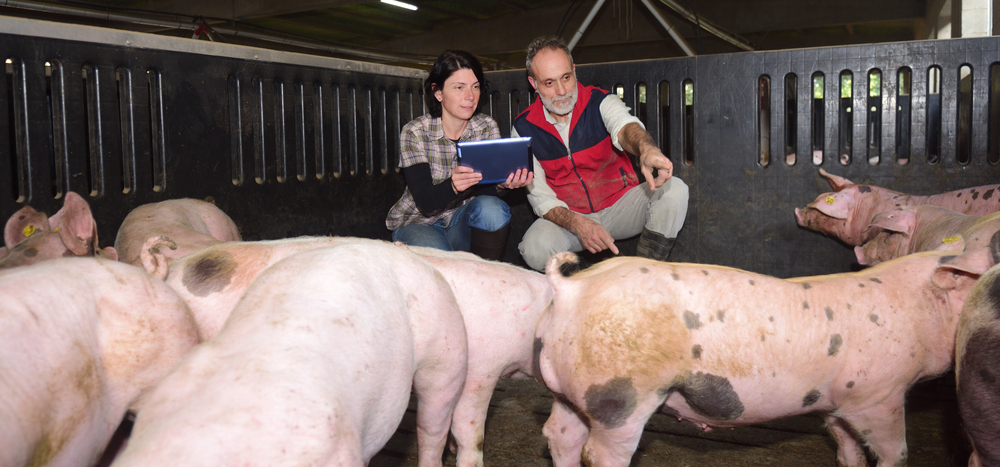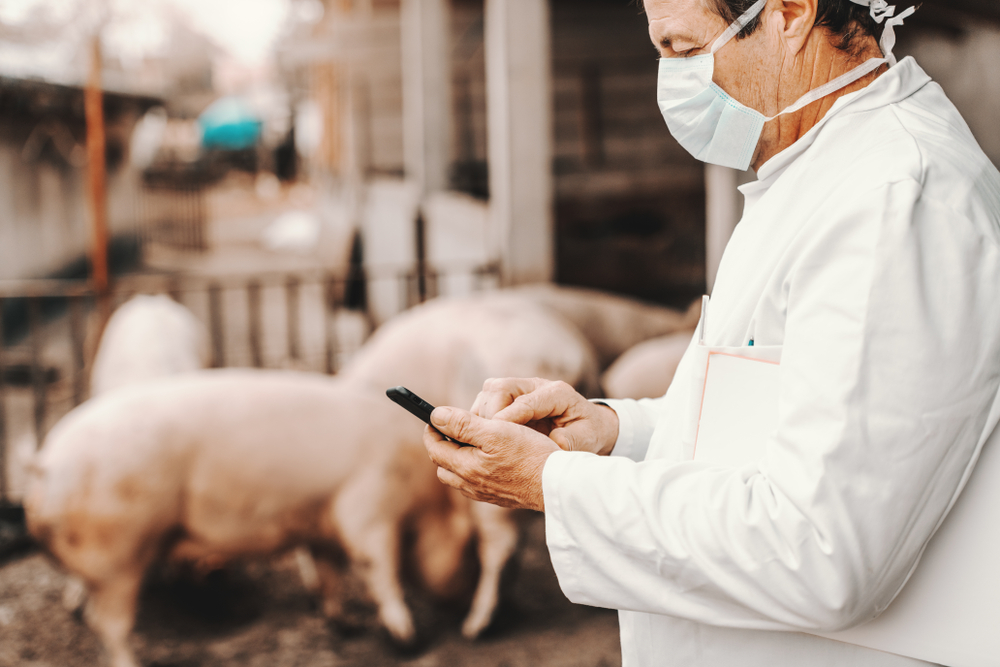This article was previously published by National Hog Farmer.
In the digital age, the field of medical technology is expanding faster than ever to bring patients the fastest, most accurate care that professionals can provide. But what of non-human clients and their needs? It may not be traditional, but the pork industry could benefit from adopting one of the advances of human healthcare: point-of-care platforms. By merging hospital-grade standards of care with the processes of swine farming, producers everywhere could be looking at a streamlined future with advantages for both them and their livestock.
Possibilities for Point-of-Care
So, what is a point-of-care platform? After all, it’s crucial to define their existing purposes before considering how to incorporate them across disciplines.

Widely used in the human medical field, these are systems that coordinate the healthcare a patient receives, and they are commonly developed as applications on tablets, smartphones, and other mobile devices. In particular, the portability of these platforms on smart devices has been praised for its efficiency across hospital floors and other large medical facilities. For instance, in a survey of several hundred medical students and professionals, over 80% of respondents said they communicated with others in the field with a mobile device via calls, text, and e-mail and further claimed that texting was far more efficient than solely relying on in-person conversation. What’s more, the speed of instant messaging proved to be especially critical in emergencies.
Even outside of communication, these apps exist for a variety of uses in a medical setting. Noted are their abilities to access hospital recordkeeping, informative resources, clinical software, patient monitoring systems, and time management resources. The ability to view and edit so many organizational facets of medical facilities is invaluable and has been shown to improve staff productivity, the convenience of technology use, and accuracy in reporting information. So what could that look like on a farm?
Particularly in large-scale facilities, an effective point-of-care platform could mean no running between barns to relay messages, especially about time-sensitive concerns. Rapid communication means equally rapid opportunities to give animals the attention they need. Even for matters as simple as shuffling pigs throughout a facility, Casey Long, a swine manager who uses such a platform, says that it reduces stress: “If you’re looking for a home for three, four pigs you used to have to walk five, six rooms. Now you can stop right where you’re at.” With the incorporation of messaging within these programs, communication can also occur when a supervisor isn’t on-site. For example, Doctor Adrian Balaban of Romania, who is in charge of monitoring disease in his facilities, can be sent pictures of different pigs’ conditions and discuss them with his team that way.

Concerning the pigs themselves, a point-of-care platform made to support commercial animal welfare could document estimated food and water intake from certain rows or troughs, notes about swine health, delivery of medicines and vaccines, and countless other data points. When producers know as much as possible about what’s happening on their farm and with their animals, they can make informed decisions about what to do next, and that need for data analysis follows a trend occurring across the business world at large.
Advantages of Analysis
According to the U.S. Bureau of Labor Statistics, the field of data science is set to expand significantly in the near future, and why should agriculture miss the benefits of that? Especially with the ongoing labor shortage in pork, identifying inefficiencies within an operation allows a manager to prioritize and set what workers they do have to the most important tasks. Besides, forms of data collection already exist on many operations.
With fewer helping hands available, many farms are now using AI and other computer technologies to monitor and collect visual, auditory, and temperature-based data about their pigs. A point-of-care platform that could allow a producer to cross-examine that information could provide indispensable insight into pig welfare. What’s more, many point-of-care systems in human medicine can identify symptoms of different diagnoses. On a farm with hundreds or thousands of pigs, a program made to flag causes for medical concern has the time and power to examine each animal in a way a human eye might not, and that creates a possibility for faster, proactive testing and treatment.

Particularly with the ever-growing size of the human population, the development of precision livestock farming and the data collection it requires is an inevitable conclusion for farms looking to expand while still maintaining a high quality of care. After all, studies have documented the economic benefits of healthy livestock, from higher rates of reproduction to higher-quality meat. Creating point-of-care platforms that collect data to support animal welfare seems like a logical next step for producers with the money to invest, so why hasn’t this technology been widely introduced to livestock management sooner?
Barriers to Development
Although commonly used in human and even companion animal healthcare, issues with cost-effectiveness and portability of devices that access point-of-care platforms have hindered their emergence in commercial livestock operations. It’s true that these platforms for other forms of healthcare require high initial investment costs, and it makes sense that producers wouldn’t want to bet on technology that’s too delicate to make it into the barns where they can record the most information. Other practical facets of farm life can be difficult to merge with technology, too. For example, exposure to the elements (temperature variations, moisture, light, etc.) can be harmful to tech, not to mention that many farms in rural areas may lack the internet connections required to run these systems. So how can producers and anyone seeking to develop a point-of-care platform work around that?

For starters, just as mobile devices are invaluable for healthcare providers, they can also have a place on a farm. Pig production can be a handful—literally—and the convenience of a device that can be put in a pocket until it’s needed can’t be overstated. For example, Kramer Gary, sow farm manager at Prestage Foods®, uses his company-appointed smartphone in the barn to attend to emails and take care of managerial duties, all while offering help to his team and ensuring high-quality pig care out in the barn. The small sizes of these devices can also make them easier to protect. Farmer Dustin Coleman, who uses a point-of-care platform, says simply buying his team lanyards off of Amazon® for their phones was enough to keep them from falling into the pit. Furthermore, Millennial and Gen Z employees are often more familiar with mobile devices, and there is potential for higher productivity from them because of that. Rather than having to spend time explaining how to organize physical sow cards, younger generations can tinker with user-friendly apps to provide better results for their employer. That productivity is worth examining as a way to receive a return on a large investment up front and an avenue for more animals to receive the best care possible.
It has been pointed out that this data, especially en masse, can be difficult to interpret without training in algorithms and the like. However, many existing point-of-care platforms in human healthcare, when built into mobile devices, also have the advantage of being portals to educational and informative resources. In agriculture, this could look like having easy access to spreadsheets of data collected around a farm, but it could also appear as video tutorials about how to use an app or how to complete various processes around an operation. Moreover, point-of-care platforms aid professional development because when a manager sees room for improvement in their facility, they have data to corroborate their conclusions that can be shown to a team. On the flip side, that also means that a team member can track data that shows their own improvement and productivity. Accountability on all levels of a farm’s chain of command holds employees to higher standards and creates higher standards for animal health in turn.
Finally, companies with aspirations to create point-of-care platforms in agriculture should plan to set up internet service for their customers. It might not be required of every sale, but farmers are busy enough without having to play IT expert. Point-of-care systems can allow producers to make practical decisions to benefit their livestock, but they need a practical installation process first.
Point-of-care systems are already the status quo in human healthcare, but their uses aren’t solely confined to that field. From instant messaging to data collection, point-of-care platforms are a logical bridge for agriculture and the digital age that can improve a farm’s efficiency, productivity, and organization to bring pigs the best living conditions possible. Their development will require careful oversight, but the future of swine management falls to which entrepreneurs are willing to develop the practical technologies needed to unlock that potential.
By Isabella Rivera
—
Want to stay up to date with SwineTech®? Keep an eye on the Popular Pig® podcast and the rest of our blog for releases that bring you the freshest cut.
